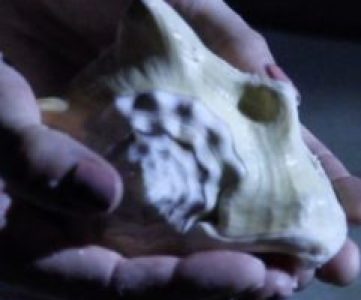Flowers of Transhumanist Fantasies
TT Journal, ISSUE 4, 12th September 2022
By Adam Vačkář
Connecting to sources
I effuse my flesh in eddies, and drift it in lacy jags.
I bequeath myself to the dirt to grow from the grass I love,
If you want me again look for me under your boot-soles.
Walt Whitman
Not long ago I was going through a major life crisis. The onset of my fortieth year brought turbulent changes in my life, a crisis in my relationship, a search for motivation in my artistic work and an approach to life in general. The crisis brought about major changes in my thinking and life after few very painful but deeply rewarding years. In this transitional period nature played a pivotal role.
During a much earlier transitional period, my adolescence, I spent most of my time in the woods in the mountains where I went on weekends and holidays to my grandparent’s cottage. Maybe this is why, once again, I returned to spending time in nature a lot, especially at night, looking for darker and more profound feelings. At the time of the coronavirus pandemic I realised the deep and important role that synergy with nature plays in a one’s life. Life on Instagram is frustrating in its unreality. It provokes constant comparison and breaks the connection between self and reality. Yet it provides an interesting and important link with people from all over the world, however, not without consequences. Several of my close friends spend their lives on Instagram, where they have many thousands of friends, but live alone in the isolation of small studio apartments, without a partner.
But I think that there’s a deeper question lying behind your question to me. I think you’re asking me: how can people live without some sense that there is an ultimate truth or ultimate scale of values… I don’t know but I don’t any longer think that this is just a transitional phase and that we’re moving on to some other settled period. I think we’re culturally in a phase of permanent revolution. (Stuart Hall)
Through pilgrimages in forests, meditation and self-reflection I have finally managed to connect to my essence, to the sources of energy that nature brings. Suddenly the completely different passage of time in the woods became deeply natural, regenerative.
Watching raindrops, the torsos of rotting trees and moss, the flow of a waterfall brought deep relief and inner fulfilment. Increasingly, I began to go on long pilgrimages in which I found various objects. Or rather, objects were finding me. I observed that many of the branches, roots and other natural objects stimulated in me creative, cultural thinking and associations. That this natural morphology evoked an interesting feeling, quite different from the one where one is in control and produces everything only from synthesised sources.
The individual dilemma is also SO difficult to see because the official way of interpreting reality claims that our feeling is a chimera. The currently dominant picture of life accepts the purportedly universal drive to function better than others in order to survive in the war of all against all. Our society has made the continuous violation of aliveness into one of its defining principles. The avalanching destruction of other forms of life reflects how severely individual emotional life has been destroyed. What makes the current consternation of reality so virulent, and thereby into a candidate for the emotional mainstream, is the fact that our whole climate of living and thinking enshrines a narcissistic worldview of exploitation. The obliteration of feelings does not have a solely private pathological dimension. Personal narcissism is also an echo of cultural narcissism, and vice versa. Our individual psychological doom manifests collectively as a universal ecological calamity. Both are interwoven with one another. (Andreas Weber)
I found myself gradually more and more motivated to make artworks in a completely different way, from within. It did no longer make much sense for me to compare myself to anyone, to create frustration of inadequacy, or to do things as I was expected to. I gradually began to find austere objects, such as tree roots that had matured in the water of a reservoir, perhaps not by coincidence built the year I was born. I accumulated more and more natural objects: large trunks of ivy brought from France, pieces of palm and coconuts from Mexico, leaves and algae from Vietnam and wasp nests from Bohemia, brought to me by various friends. I perceived a deep, symbolic meaning in everything.
The universe is not purely gentle. It is just as deadly as it is gentle. And it can only be gentle because it is deadly. It can only be gentle insofar as its gentleness constantly puts up a fight against death. There is a world of difference between the glorification of death as another variation of the delusion that one can come away cleanly and the sober recognition that this world is composed of light and shadows and that everyone who seeks the light must also welcome those shadows. Learning to die does not, in fact, mean learning to kill. Nor does it mean learning to be killed. Rather, it means: serving the unfolding of enlivenment, of the self-in- connection-one’s own self and thereby the self of the whole. (Andreas Weber)
And then one day in January, during one of my pilgrimage in the woods on the outskirts of Prague, at the time of restrictions on movement amidst a coronavirus pandemic and intense drizzle, I came across a strange plant. It didn’t look like anything I recognised. Fragments of it were scattered on the ground and after a while I realised that it was probably Giant hogweed, a plant I had heard a lot about as a child from my grandfather as well as from the news. The morphology of the fragments of this plant fascinated me completely. The reticulated massive stem- trunk and the huge flower of this plant were fascinating. I started to search for this plant, looking for a place where there would be more specimens. I found a strange place by a stream, somewhere between a factory and a small town, a place I imagined nobody goes at all because of the noise of the factory and the adjacent large substation. It was not a pleasant place to walk. It was, however, a paradise for the Giant hogweed plants, which man had banished from most places and had condemned to death by legislation. The plant inwardly fascinated me with its stature, its unbridled vigour and its great vitality. If touched it causes photoactive burns. It’s not a nice plant: it’s not an obedient decorative slave to human gardens. It pursues its own interests, which are different from ours. Indeed, there are many beings on this planet who have a different intent to us. They are not interested in our gardens, airports, highways and other concrete surfaces. They want to live and breed freely.
Soon after I went to London for an artist residency at the Delfina Foundation. During this residency I concentrated on the study of the Giant hogweed and research concerning its introduction to Europe. The introduction of Giant hogweed – Heracleum mantegazzianum was first recorded in Great Britain in 1817 when it was put on the seed list at the Kew Botanic Gardens in London. By 1828 the first natural population was recorded, growing wild in Cambridgeshire, England. Giant hogweed is native to the western Caucasus region of Eurasia. It was introduced to Britain as an ornamental plant in the 19th century, and has also spread to other areas in Europe, the United States, and Canada. Its close relatives, Sosnowsky’s hogweed and Persian hogweed have similarly spread to other parts of Europe.
The level of consciousness – our subjective experience is superior to the conscious rational knowledge. Potential of art is in the personal lived experience. Let’s stop all the intrusive, immature intrusions of the rational into the arts. Reality is shared by many, but besides reality, which we all share rationally as well as unconsciously on a cultural and perhaps also religious and ethnical level, we must also take into account the unshared subjectivity of life, which makes up at least half one’s entity.
Unshared versus actual: a visible part of a tree and an invisible part – roots. The invisible, unspoken part share half of our reality.
The water’s mirror reveals the shadow side of our being.
Landscape has a spiritual charge, its natural mood and character determined by its long term development and relationships invisible to man. Artificial landscape that originates in greenhouses, is an image of man, who approaches a garden similarly to an artwork. But this has nothing to do with a natural development. (Author)
In 1885 there were about hundred colonial botanic gardens in existence in all corners of the British Empire. Kew gardens played important role in their establishment and ongoing management. Kew supplied huge numbers of plants to these gardens. To introduce a new commercially viable plant to a particular part of the world, seed or plants would initially be sent to the local botanic station for propagation. The relationship between the colonial gardens and Kew was not one way; the gardens sent many thousands of specimens to Kew. It was referred to as the ‘botanical headquarters of the British Empire. It contributed to the commodification of certain plants such as coffee and tea. Today, coffee is the second most valuable international commodity. The main focus was on plants, that could be used as economic crops to develop new industries. For example rubber plants were also collected to decorate the gardens of the colonial governors or provide food or medicine.
Plants have influenced the affairs of every nation. The first explorers such as Christopher Columbus, Vasco da Gama and others travelled for spices. Potatoes, corn, beans, sunflowers, corn, tomatoes and other New World foods enabled population growth on a scale never seen before. The cultivation of sugarcane, tobacco, and cotton depopulated large parts of Africa because slaves were needed in the New World.
Without hops there would be no beer or brass band, without the coffee tree no Bach cantatas, no Indian hemp no ragas and bhajans. For the potato, millions of poor people from Europe migrated to the New World to replace the exterminated Indians. Plants determined the routes of prehistoric hunters to a greater extent than the animals they hunted. Even the animals traveled from pasture to pasture. The diet of the natural peoples consisted of eighty percent plants, gathered primarily by women. Meat hunted by men makes up only about twenty percent. From a global perspective, it looks as if our lives are dominated by plants. Plants populated the Earth long before humans did, making it habitable for us and for animals. Why should we deny these ancient beings their wisdom?
Why can’t we love all plants? Each is a divine idea, each is a gift. The term “weed” speaks of a mindset alienated from nature. As if against an evil enemy, many gardeners and lawn fetishists go to battle with their green foe, armed to the teeth with poisonous sprays and power mowers. Many of them poison themselves with poisonous substances during their desperate fight against the invading army of weeds. (Wolf-Dieter Storl)
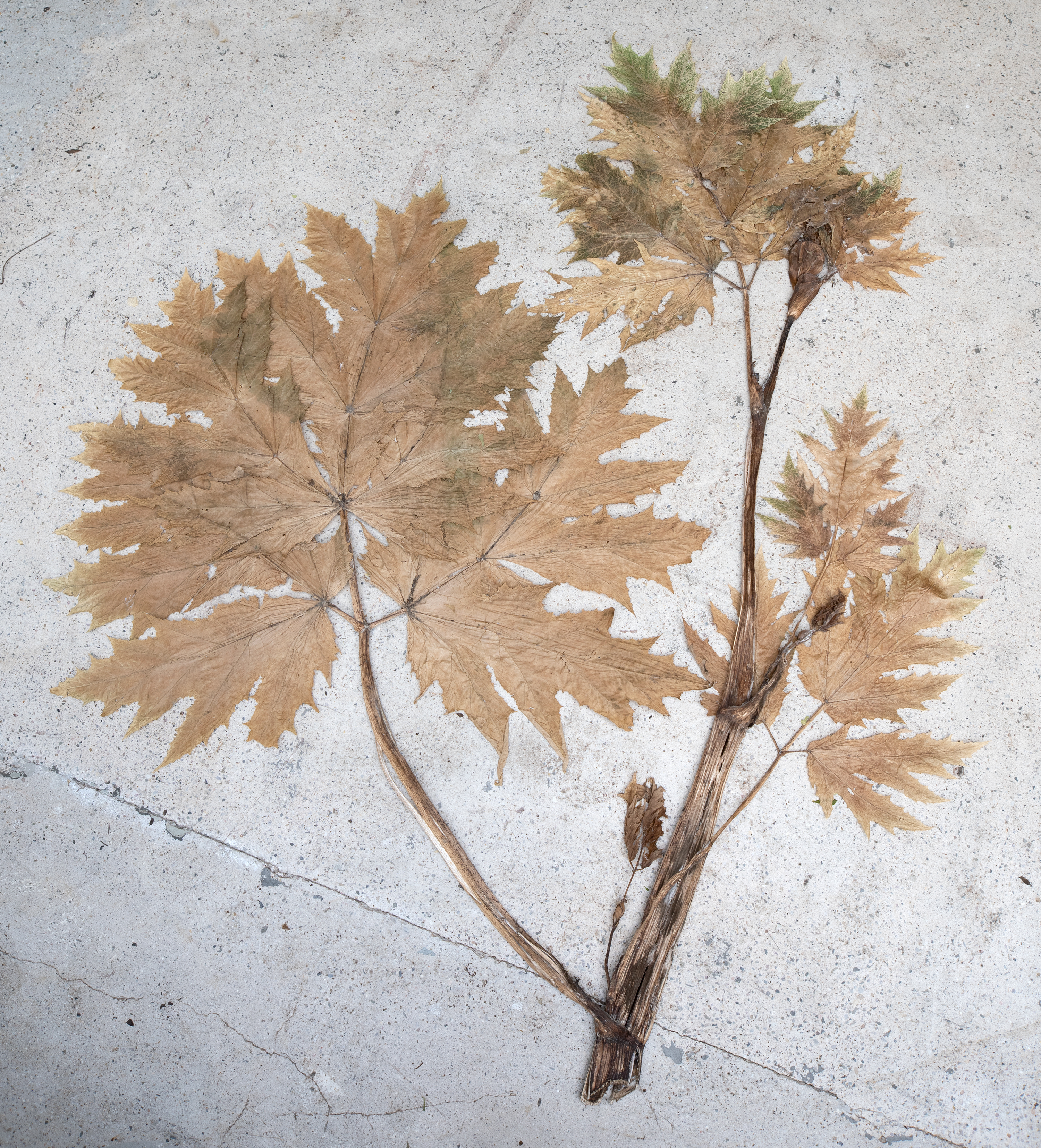
The synergy of spirituality and biology
In the course of my transitional crisis, I realised that the human connection to nature is crucial. I focused on spiritual development and cultivating my soul through developmental seminars, nature pilgrimages and meditation. Soul, what does the word really represent? I think it’s interesting to see your soul as a chip in a camera, a reality sensor. Everything then suddenly makes sense: negative and positive events are always an asset and a lesson to build on. That is, only after I realised that I actually have feelings and that they are important, if not crucial to my existence. I began to listen to my intuition, to trust and be guided by it. I let things flow and new friends and impulses come to me.
At one point I began feeling that I had become too detached from the real world and that my excessive immersion in myself was misguided. At that moment I remembered that I had a book in my library by the French Jesuit monk and biologist Teillard de Chardin. Inherited from my grandfather, a composer, the binding of the book was peeling and the paper was yellowing. In this book Teillard brilliantly blends spiritual and biological worldviews.
The book strongly influenced me and set me on a very different trajectory of narrating the world as biological processes. Teillard also predicted the global interconnectedness of humanity on a planetary scale. In the shadow of the current tumultuous events, where the world is once again moving backwards and fragmenting a bit, it is only a matter of time before we are able to communicate in a truly planetary way again. While in London, on the advice of a friend, a curator, I came across a book by biologist Andreas Weber that poetically and lyrically describes the profound relationship between humans and nature from a biologist’s perspective. Contemporary science and society see nature in polarity to man and human civilisation. This is the legacy of the Enlightenment mindset, which saw man as superior, set apart from nature. His cognitive thinking, after all, sets him completely apart from all living beings. It is only today, after watching countless Netflix documentaries about mushrooms, plants, birds and fish, one is beginning to realise the complexity of communication and the existence of life forms on Earth. There are so many sophisticated life forms that don’t need to speak or think cognitively to communicate information. They live in symbiosis with the world.
Is it really true that the incoming plants, the neophytes, threaten the native flora? Or is it rather that we feel threatened when nature, in the flux of life’s changes, destroys our fixed categorical thought patterns and schemes that we want to impose on it? Plants and animals that do not fit into our conceptual system are then evil and must be fought for.
This sets in motion the psychological mechanism by which humans transfer their inner fears and insecurities to other beings in order to proxy fight or suppress them. Nature is no museum where everything rigidly sits in its assigned place. The ecosystem is living and constantly changing. Plants have always wandered, fortunately! When the glaciers came, they retreated south. But many of them didn’t survive, with mountain peaks and the Mediterranean Sea in their way. (Wolf-Dieter Storl)
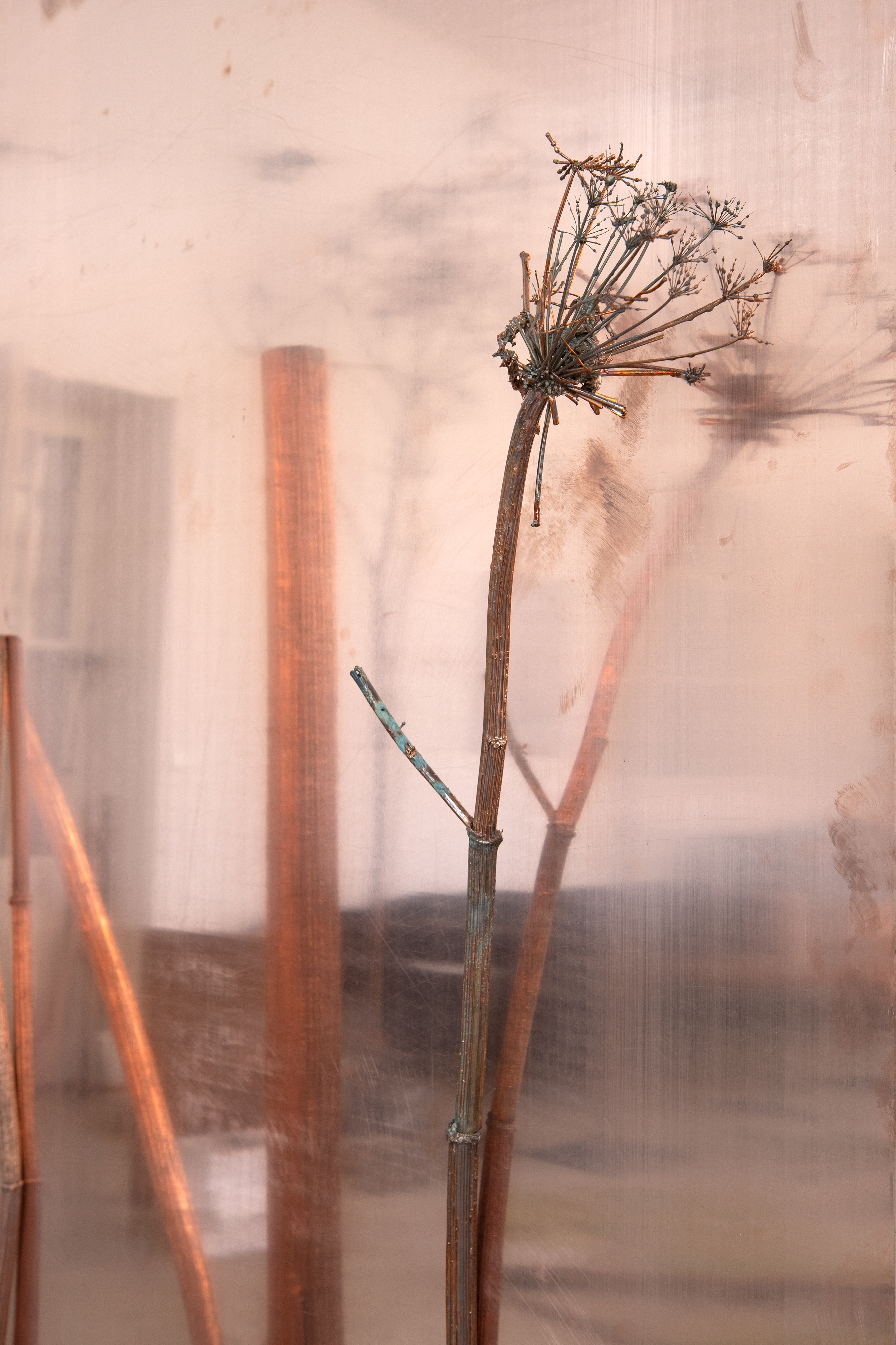
Doomed plants?
During the Covid restrictions, biologist friend and I had long discussions about art and biology; there was time for them. We arrived at the idea that we would like to do something together: he was very interested in art and I was fascinated by biology. We started a platform together called Transparent Eyeball, after a quote from a book by the iconic American biologist and philosopher Waldo Emerson. We started asking his colleagues, but also biologists at Cambridge University, Lund University, the University of Texas at Austin, etc. what they think art and biology have in common. For the biologists it was complicated to adopt the thinking of an artist. They have their learned trajectories of thinking which they apply when doing science. To think outside these established norms can be liberating but also fraught with difficulty.
In the long run, it is the species that keep moving and successfully exploit new environments that will survive and prosper and thus ensure the survival of their kin on planet Earth. (Chris D. Thomas)
I conducted two exhaustive interviews with leading botanists, Mark Spencer, a forensic botanist in London, and Petr Pyšek of the Academy of Sciences in Prague, which were highly satisfying.
I spoke to these specialists in so-called invasive species, on the subject of distinguishing invasive plants and their place in nature (invasive species are those whose propagation has been caused by man). I learned, among other things, that invasive species spread so much because they do not have predators in the form of fungi and beetles in their new homeland. In addition, these are often species that have been selected (in the remote country of their origin) because of being as strong and parasite-free as possible. Once in Europe, they then began to spread uncontrollably, taking up large areas of habitat at the expense of local, native species.
One cannot help but notice the analogy with humans and migration, including the powerful emotion that migration can stir. Ironically it is very similar with plants. A moral judgment is passed onto them, these plants are labelled as alien, bad, invasive and worthy of destruction. Even the army is said to have been deployed against the Giant hogweed, perhaps a political gesture to show how dedicated they are to eradicating this plant.
I realised how man is playing with nature, how he is causing a disaster through his many experiments, by promoting only his own interest while ignoring the laws of nature. As I subsequently learned, it is similar in the animal kingdom: many of the animal species living in Europe are invasive. They are being eradicated by the thousands, but the big question is which species to eradicate and how far to go? If man has already made his mistakes, should he let nature deal with it, or should he attempt to restore some balance, by introducing other exotic species that will be predators for the invasive ones? Thus setting in motion a sequence of events where man engages in natural engineering with unforeseeable consequences.
Whilst this realisation and revaluation is crucial especially now, with the world’s human population growing steadily, it is still a human-only perspective that we make use of, and the logic of looking at possible “end of the world” scenarios hasn’t changed much through the course of (human) history.
We can no longer hide from the death that surrounds us, when for many, we have been the cause of extinction. Only by embracing the knowledge of death, and letting death on a global scale enter our everyday life, can we begin to hope for the collective living on Earth rather than the fear of its end. (Tautvydas Urbelis)
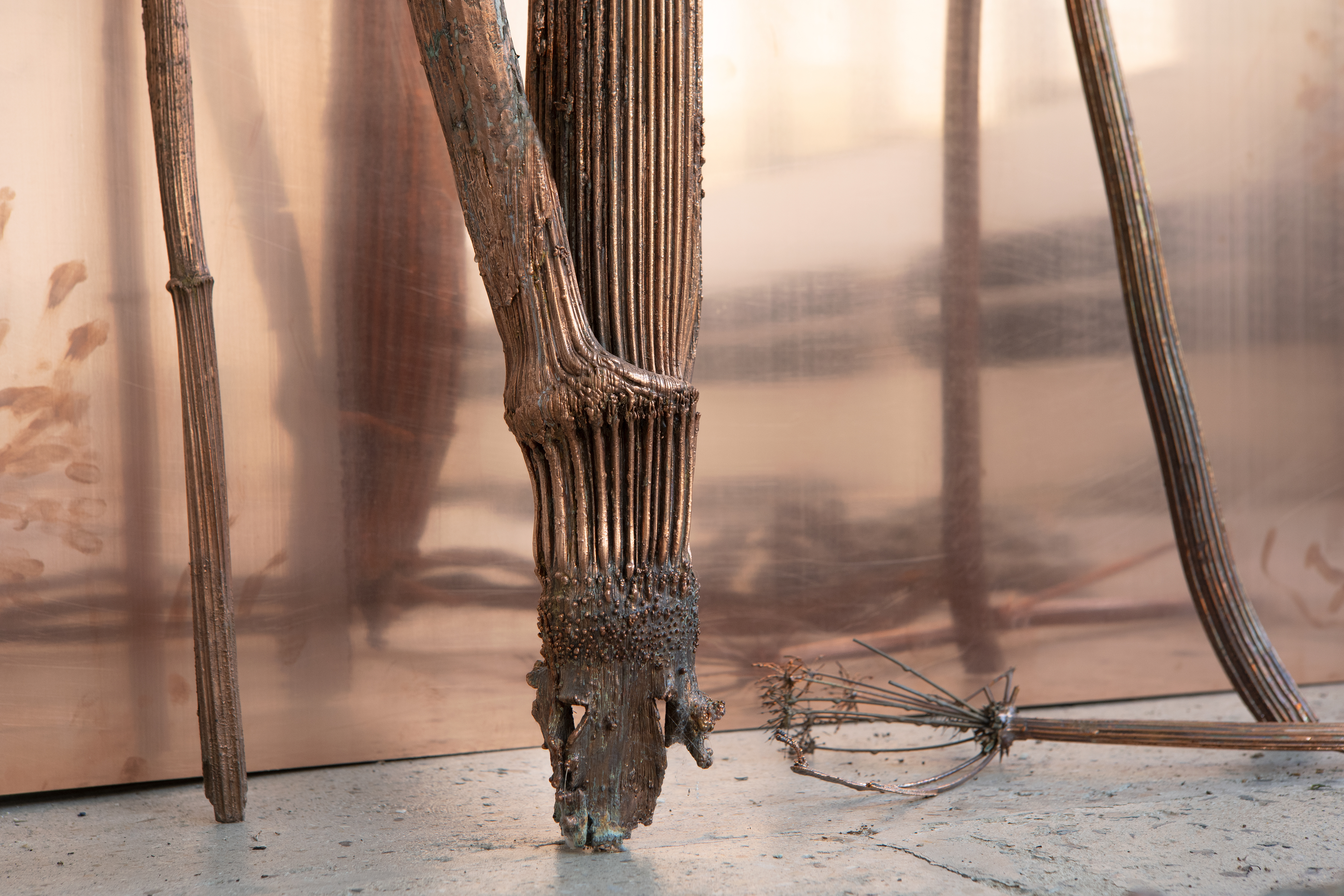
Why should an artist be interested in biology?
Because it’s a new trajectory and contribution to thinking in art. Biology provides factual information from the depths of animal reality that touches the non-linear artistic thinking, as it were, from the other side. Through the study of biology I have come to understand that our persisting Enlightenment belief of man standing outside the realm of nature is completely out of touch with reality. Man is a colony of varied organisms, he is connected to nature physically and mentally, and his thinking is steeped in animal behaviour. He is an integral part of the natural realm, and it also includes all his irrational motives and decisions. Ultimately there is nothing linear or predictable in our lives, and there is a false representation of reality as portrayed by a consumer society that relies on its belief in science. During the coronavirus isolation, many of my friends retreated to nature to find mental balance. And those who spent long hours in front of a computer screen on endless Zoom calls eventually came to a complete over-saturation of virtual communication, with many of them falling into depression.
The great project of modernity for the last five hundred years has been to hide death, or even to abolish it by means available only to human beings. (Andreas Weber)
Thinking about nature through art makes us think on different terms. At the same time getting biologists to depart from their usual axioms is an interesting challenge. In my motives I acted irrationally, based on instinct, wanting to encounter reality from the side of biochemistry and information from the deep inside of bodies and cells. I was interested in learning about how other animal bodies work.
Because art is part of our human culture, it can be perceived as a form of evolution. Through culture we share information horizontally and in real time, it has real consequences on our bodies. When we decide to be vegetarian or vegan and start practicing yoga, for example, choices which are all related to a cultural identity, our bodies will inevitably change. On the other hand, evolution is vertical, that is, biological: we have children who have children, and where traits and information are passed on biologically over a very long period of time.
Poetic creation is not the of the world’s creativity, but its central power. Art-at least, living art does not imitate nature; it works like, or rather as, nature. It is an instrument and an embodiment of the wild. It transforms us by lending voice to the drive for transformation out of the “creative void.” (Andreas Weber)
Artistic way of thinking can work intuitively, unconstrained by norms. Artistic thinking can explore all possible scenarios, similarly to evolution where organisms try out any possibilities of survival.
After many conversations with biologists who were systematically rejecting the terms of “beauty” and “art”, I finally came to think that it would be interesting to reverse the situation and use the language and thinking of biology in art. This was immediately so liberating! To imagine that our terms of “art” and “beauty” don’t exist. That what we call art is purely a set of evolutionary preferences shaped by the environment we come from, our surroundings, our instincts, and the direction of our own and our tribal soul trajectory. In the meantime, terms such as “soul”, or “tribal soul” coming from esoteric thinking are completely foreign to science. Art seems to be an ideal playground to combine both ends of the counter-fields.
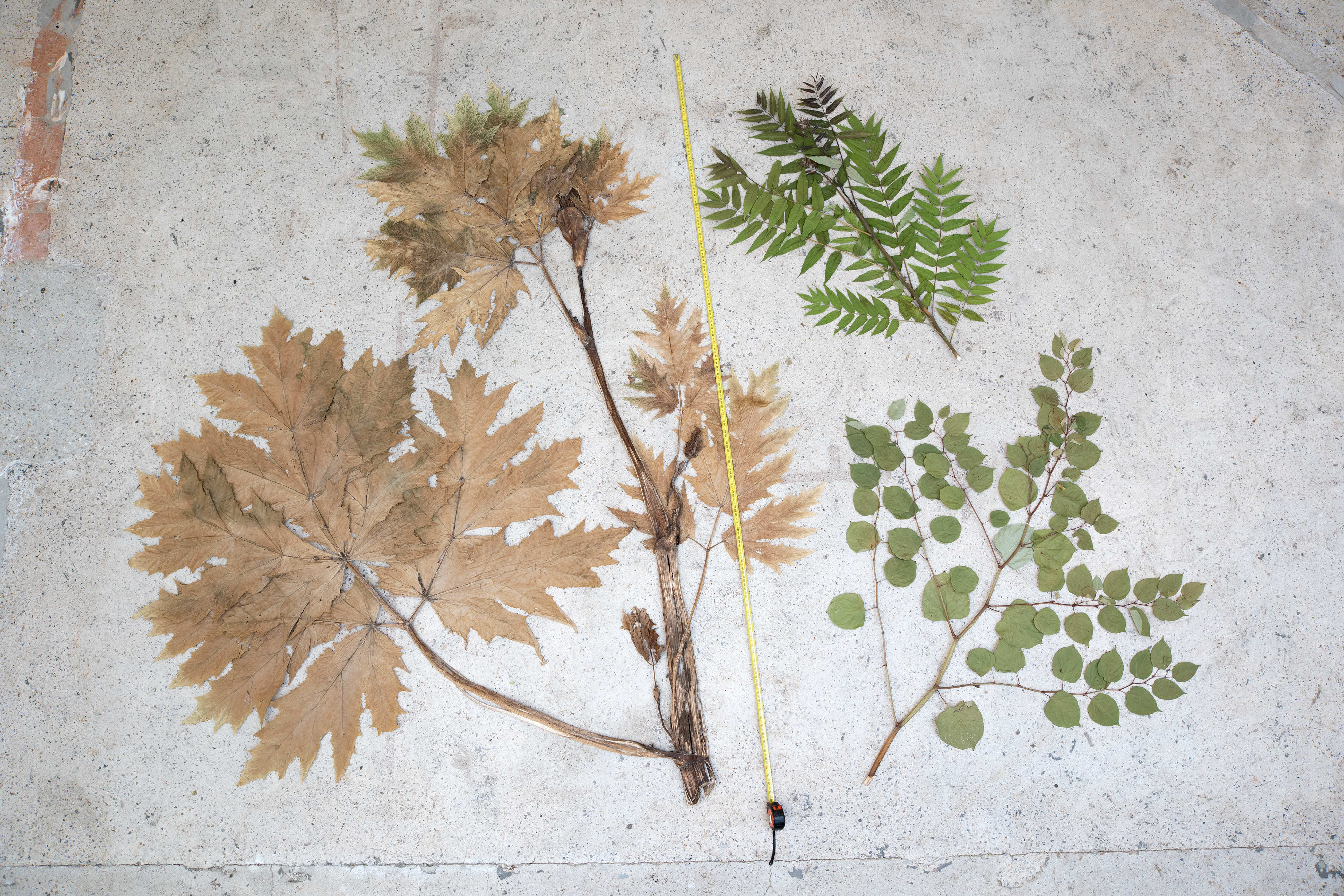
Capitalism and transhumanist fantasies
Transhumanism is a philosophical and intellectual movement which advocates the enhancement of the human condition by developing and making widely available sophisticated technologies that can greatly enhance longevity and cognition.
Transhumanist thinkers study the potential benefits and dangers of emerging technologies that could overcome fundamental human limitations as well as the ethics of using such technologies. Some transhumanists believe that human beings may eventually be able to transform themselves into beings with abilities so greatly expanded from the current condition as to merit the label of posthuman beings. Fundamental ideas of transhumanism were first advanced in 1923 by the British geneticist J. B. S. Haldane. He predicted that there would be great benefits coming from the application of advanced sciences to the human body.
It is legitimate to be sceptical of a tragedist Promethean impulse claiming to end capitalism with full automation, because it is based on a false personification of capitalism as an aged person who will be rendered obsolete by technology.
However, we are not simply rejecting the idea of acceleration either, rather it makes more sense to ask: what kind of acceleration is faster than taking a radical turn, to deviate from the global axis of time and to liberate our imagination of technological futures from the transhumanist fantasies? This reopening of the world history demands a reopening of the question of technology which challenges the ontological and epistemological assumptions in modern technologies, be it social network or artificial intelligence. (Yuk Hui)
Transhumanism sees man taking the reins of evolution into his own hands. It’s knocking louder and louder on the door. Perhaps, just like the augmented human body, the naturally enhanced super resistant, so-called invasive plants are the solution for a green landscape of tomorrow. They will be able to inhabit arid areas, they will be resistant, able to grow in infertile soil, in garbage dumps and toxic spillage areas, and they will survive droughts and heat. Perhaps we have judged these plants too soon, perhaps there will come a time when we will be thankful that they exist. They may be one of the few green survivors of the Anthropocene.
Before Japanese knotweed began its imaginary assault on British suburbia, it had been a favoured exotic addition to Victorian landscape gardens, having been introduced to the country via an unsolicited donation to the botanical collections of Kew in 1850. Escaping from the wild gardens favoured by English horticulturalists of the era, it established itself in waste dumps, railway embankments and graveyards across the land. Since the 1970s, the epicentre of the supposed knotweed invasion has been the post-industrial city of Swansea, where the lead- and sulphur-polluted soils of derelict factories were conducive to resettlement by a plant that originally flourished on the nutrient- poor lava slopes of Japanese volcanos. (Maja, Reuben Fowkes)
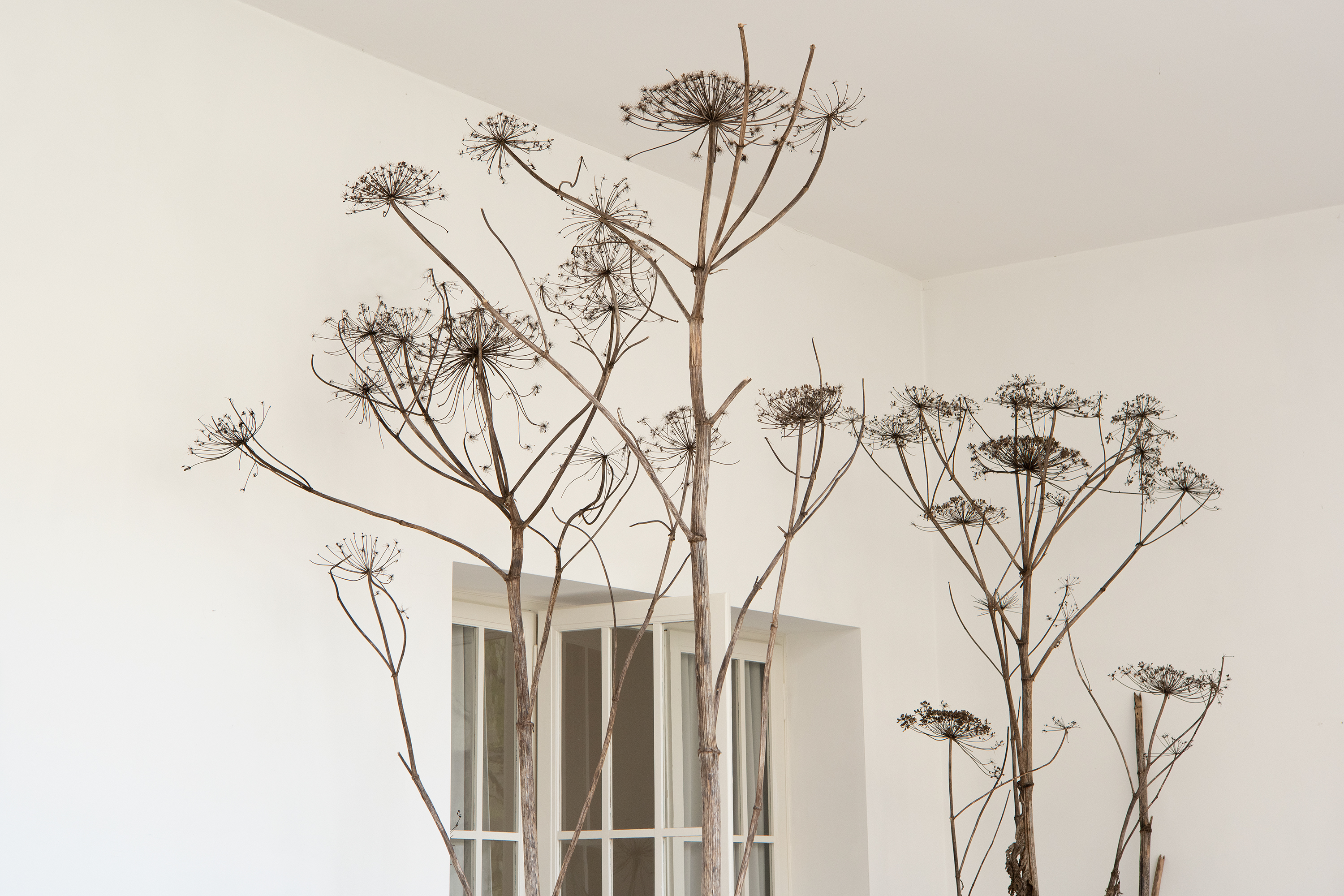
Native, invasive
When I encountered the Giant hogweed in the Czech forest in the suburbs of Prague an interesting analogy occurred to me: If this plant, so familiar from my childhood, is not native to the Czech republic, what does this mean for our sense of national and cultural identity as a whole? Isn’t this country, a crossroad of sorts, also full of people whose genetic origins and cultural identity are from all around Europe? According to the latest genetic studies, only a small percentage of people are genetically descended from the Czech Republic, most are from France, Germany and from the Slavic nations. What constitutes our identity today?
… in the long run most native flora could actually be seen as ‘alien invaders’. This corresponds to the scientific insight that the ancestors of all species that are alive today flowed back and forth across the globe for many millions of years. (7)
I studied art in Paris, I studied Japanese in Tokyo, I have been moving between several cultures at the same time all my life. My grandparents are from Kiev, the Czech Republic and who knows where else. The Czech country has a linden tree in its emblem. Japan has a chrysanthemum. No country has the Giant hogweed. Why not? I ask myself…
Sources:
- Andreas Weber, Matter and Desire: An Erotic Ecology, Chelsea Green Publishing, 2017
- Wolf-Dieter Storl, Mit Pflanzen verbunden, Franckh-Kosmos Verlags, 2005
- Chris D. Thomas, Inheritors of the Earth: How Nature is Thriving in an Age of Extinction (London: Penguin, 2018)
- Post-pandemic Futures – Introduction by Tautvydas Urbelis in Ruppert Journal, April 2021
- Yuk Hui, Essays about Cosmotechnics, Hope Recycling Station, 2022
- Maja Fowkes, Reuben Fowkes. 26 Feb 2021, The Politics and Ecology of Invasive Species from: The Routledge Companion to Contemporary Art, Visual Culture, and Climate Change Routledge
- Cooking Sections, The Empire Remains Shop (New York: Colombia University Press, 2018)
Adam Vačkář (1979) has presented his work in diverse international group and solo shows in Centre Pompidou, Palais de Tokyo, Art Basel – Statements, Cologne Kunstverein, Museum Morsbroich, SMAK, National Gallery in Prague, City Gallery Prague and other venues. He is co-founder of Prague-based collective Hope Recycling Station, which organises lectures and projects by international artists, curators, writers and philosophers. He has been in residencies at Delfina Foundation in London, Art Unlimited in New York, Boghossian Foundation in Brussels, Pavillion at Palais de Tokyo in Paris and others. His recent projects address the topics of ecological crisis, the impact of nature on human spiritual life and nature’s importance for mental stability and development. The materials for his installations are located on extensive spiritual pilgrimages in forests in near and far countries. Vačkář’s recent video is revealing the complexity of the human and plants relation. His objective is to participate on decolonisation of nature and to question the history and human only perspective on so called invasive plants.
